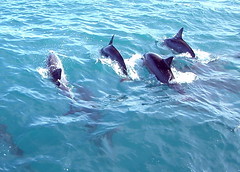 As far back as 1999, the Defence Advanced Research Projects Agency (DARPA) Controlled Biological Systems Program funded a bee-training program to detect buried landmines, so that many thousands of acres of the world's land could be productively farmed without encountering landmines the ugly way.
As far back as 1999, the Defence Advanced Research Projects Agency (DARPA) Controlled Biological Systems Program funded a bee-training program to detect buried landmines, so that many thousands of acres of the world's land could be productively farmed without encountering landmines the ugly way.
A bee's natural instinct is to extend its proboscis when it encounters a desirable odour, anticipating the taste of a flower, let's say. But the bees used in the 1999 DARPA experiment were trained, via classical Pavlovian conditioning, to respond to the odour of TNT instead. Their reward when they responded with a Proboscis Extension Reflex (PER), was a taste of sweet syrup. Then, trainers attached small diodes onto the backs of TNT-trained bees and used handheld radar tracking devices to chart where the bees went.
Inscentinal Ltd. has been working on developing very unique sensing instruments that couple the biological performance of honeybees with the technology to translate bee response into an electronic response. Inscentanil's first proprietary design is a hand held device called the VASOR136, a trace vapour detection unit that is very versatile.
The VASOR136 contains 36 cartridges each containing one bee. Filtered in by a standard gas mask cartridge is a constant supply of clean air. When an operator presses a button on the VASOR, an air sample is taken from the environment that exposes the bees to ambient, unfiltered air. If the bees have been trained to respond to a vapour in that air, the bees will exhibit a PER response and the response will be translated by the VASOR into a simple result shown on the PDA screen display.
Read more at: http://www.physorg.com/news188894292.html













